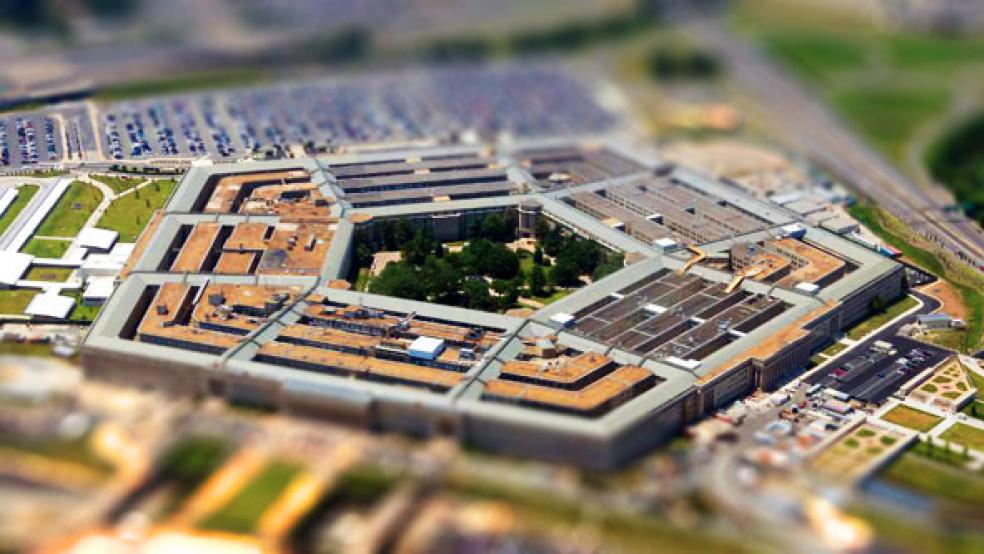The U.S. Air Force finally handed out the contract for its next-generation and still mostly secret bomber, a program that could wind up costing more than $100 billion over the next several decades.
Northrop Grumman, the world’s sixth-largest defense firm, beat a joint effort by defense industry giants Lockheed Martin and Boeing for the chance to replace the service’s aging B-52 and B-1 bombers.
Related: The Pentagon’s New Bomber Faces a Potentially Costly Delay
William LaPlante, assistant secretary of the Air Force for acquisitions, told reporters during a Pentagon press briefing that an independent cost analysis, which the Defense Department has not released, put the price tag of the Long-Range Strike Bomber at $564 million per aircraft in today’s dollars.
The service aims to buy 80 to 100 new bombers, putting the effort’s purchase price at around $55 billion. Another $23.5 billion will be spent to develop the aircraft, which likely won’t be deployed for another decade, pushing the program’s sticker price up to about $80 billion. Toss in lifetime maintenance costs, unforeseen changes and upgrades and typically bad budgeting by the Pentagon and the program’s cost could easily swell to over $100 billion.
The high-profile contract award, one of the largest on record, had been the source of major speculation around Washington for months as the award date kept slipping down the calendar.
The award is a boon for Northrop, which has seen major aircraft programs the like F-35 Joint Strike Fighter go to Lockheed and Boeing in recent years, and which began its campaign for the contract with a commercial during this year’s Super Bowl. Northrop’s stock rose sharply Wednesday, up more than 5 percent in afternoon trading.
Related: Air Force Gets Wrong Price Tag for New, Budget-Busting Bomber
LaPlante said the vitality of the country’s defense industrial base “was not at all a criteria in the source selection.” However, companies’ submissions to the Pentagon are shrouded in mystery, since much of the bomber program is classified and there’s no set timeframe for when the bomber will be fully operational.
For now, the pressure falls on the Air Force to keep the new bomber program on budget, something the services don’t have a great track record of doing. The Government Accountability Office released a new report this week on defense acquisitions that makes it clear that the process is inefficient at best: “U.S. weapon acquisition programs often take significantly longer, cost more than promised and deliver fewer quantities and capabilities than planned. It is not unusual for time and money to be underestimated by 20 to 50 percent. As the Department of Defense (DOD) is investing $1.4 trillion to acquire over 75 major weapon systems as of March 2015, cost increases of this magnitude have sizeable effects.”
The F-35 stands out as a prime example. Years behind schedule and plagued with cost overruns and technical snafus, the effort has cost around $400 billion to date, making it the most expensive weapons program in U.S. history. The fighter program is expected to cost more than $1 trillion over its lifetime.
Predictably, service leaders argue that the new long-range bomber will be different.
“I want to say right now that our goal in the Air Force will be to beat these independent cost estimates,” Secretary of the Air Force Deborah Lee James said during the briefing.
Related: The Pentagon’s Next-Generation Budget Busting Bomber
"If we remain disciplined and keep program requirements stable, we believe we can beat these estimates in the future," LaPlante added.
The contract itself is split into two parts. Tuesday’s award was for development, while another will cover five production lots of the new bomber, for 21 bombers in all.
Service officials said executives from both teams would be briefed on Friday about the selection process and declined to speculate if Lockheed-Boeing would protest the award to the Government Accountability Office, a process that could gum up the effort for months or years.
In a brief joint statement, the losing team said they “are interested in knowing how the competition was scored in terms of price and risk.”
Congressional lawmakers, who have expressed concern about the contract award’s delay, also plan to keep a close eye on the multi-billion dollar effort.
“We must avoid the acquisition malpractice that has shortchanged our national defense in so many other instances,” Rep. Jackie Speier (D-CA), a member of the influential House Armed Services Committee and an outspoken critic of the F-35’s costs, said in a statement.





